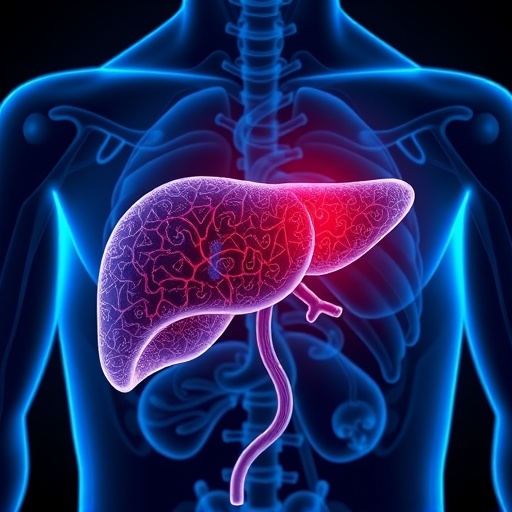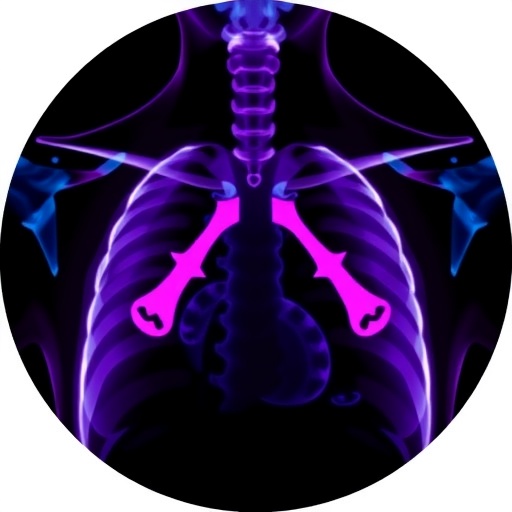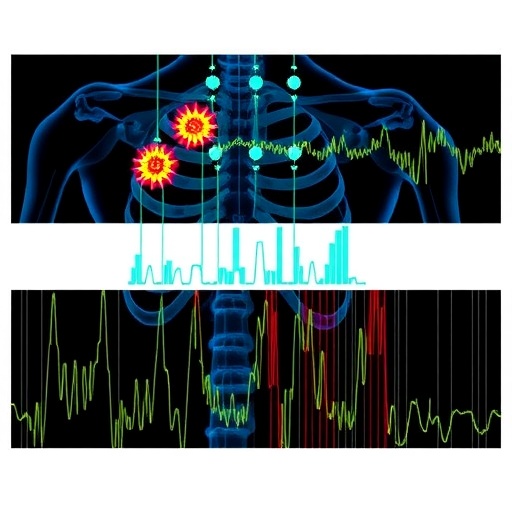The treatment of hepatocellular carcinoma (HCC) has seen revolutionary advancements with the introduction of molecular targeted therapies and immune checkpoint inhibitors (ICIs). These systemic treatments have extended survival and improved outcomes for patients with intermediate to advanced stages of HCC. However, the promise of these agents is tempered by their liability to induce liver injury, a complication that poses significant clinical challenges. Recognizing the mounting frequency and complexity of drug-induced liver injury (DILI) linked to these therapies, a multidisciplinary expert panel convened by the Chinese Society of Hepatology has developed a comprehensive consensus guideline, published in 2025, to address management strategies specifically tailored for liver injuries associated with targeted drugs and ICIs in HCC.
Liver toxicity associated with these therapies reflects a multifaceted pathogenesis. Targeted drugs, mainly tyrosine kinase inhibitors (TKIs) such as lenvatinib and sorafenib, undergo hepatic metabolism primarily via the cytochrome P450 enzyme system. Their biotransformation can generate reactive intermediates leading to oxidative stress, mitochondrial dysfunction, and the activation of apoptotic cascades within hepatocytes. This intrinsic or idiosyncratic injury may further be exacerbated by immune-mediated mechanisms. Meanwhile, ICIs, by blocking immune checkpoints like PD-1 and CTLA-4, unleash cytotoxic T-cell responses. This immune activation, while beneficial in antitumor effects, can cause unchecked T cell-mediated hepatocyte damage, manifesting as immune-related liver injury (ILICI), characterized histologically by intense lobular infiltration of CD8+ T cells and immune-mediated cholangitis.
Epidemiological data indicate substantial variability in the incidence of liver injury across different therapeutic agents and regimens. For instance, TKIs demonstrate alanine aminotransferase (ALT) and aspartate aminotransferase (AST) elevation in approximately 9–25% of treated patients. Higher hepatotoxicity rates have been seen with vascular endothelial growth factor receptor (VEGFR) antagonists like apatinib. ICIs, including PD-1 inhibitors, show liver enzyme elevations in about 9–26% of cases, with combination therapies such as nivolumab plus ipilimumab or camrelizumab combined with apatinib frequently pushing these rates beyond 50%. When systemic regimens are coupled with locoregional interventions like transarterial chemoembolization (TACE) or hepatic arterial infusion chemotherapy (HAIC), the risk and severity of liver injury increase substantially, underscoring the critical need for vigilant monitoring.
Identifying patients at heightened risk is essential for preemptive management. Underlying chronic liver diseases, particularly chronic hepatitis B or C infections, drastically increase vulnerability to liver injury during systemic therapy. The compromised hepatic reserve in patients categorized as Child-Pugh B is another potent risk factor. Genetic polymorphisms in drug-metabolizing enzymes significantly influence drug clearance and toxicity. For example, variations in UGT1A1 and UGT1A9 genes have been correlated with sorafenib and regorafenib-associated hyperbilirubinemia, respectively. Furthermore, patient demographics such as younger age and the concurrent use of hepatotoxic medications, including acetaminophen, add layers of complexity to individualized risk profiles.
Given the high stakes, rigorous pre-treatment assessment protocols are advocated. Baseline evaluations must confirm that patients demonstrate adequate hepatic functional reserve, with Child-Pugh scores not exceeding 7, and liver enzymes (ALT, AST) and total bilirubin (TBIL) levels within defined safety margins (ALT/AST ≤ 3 times upper limit of normal (ULN), TBIL ≤ 1.5 times ULN). Comprehensive viral screening for hepatitis B surface antigen (HBsAg), anti-hepatitis B core antibody (anti-HBc), and anti-hepatitis C virus (anti-HCV) is mandated. Patients positive for HBsAg require antiviral therapy initiation at least one week prior to systemic treatment onset. Similarly, those with detectable HCV RNA are to receive direct-acting antiviral regimens, mitigating the risk of viral reactivation and liver decompensation during therapy.
The clinical spectrum of liver injury induced by these agents ranges from asymptomatic elevations of liver enzymes to severe hepatitis presenting with nonspecific symptoms such as fatigue, nausea, and jaundice. Histopathological examination often reveals distinct patterns corresponding to drug class. Targeted therapy-induced injuries may manifest as mixed hepatocellular and cholestatic damage with evidence of mitochondrial and oxidative injury, while ICI-related liver injuries predominantly show immune-mediated hepatitis marked by dense CD8+ T-cell infiltrates or immune-mediated cholangitis involving bile duct epithelial injury.
Accurate diagnosis hinges on correlating liver test abnormalities temporally with drug exposure and resolution upon drug withdrawal. Importantly, the diagnostic process requires exclusion of differential causes such as viral hepatitis flare-ups, tumor progression, other hepatotoxic medications, autoimmune hepatitis, and rare but critical conditions like myocarditis or myositis when AST is disproportionately elevated relative to ALT. Liver biopsy plays an indispensable role in ambiguous cases or those with severe, refractory liver injury, providing histologic clarity that guides therapeutic decisions.
The consensus presents a refined grading system for liver injury severity, integrating clinical symptoms, biochemical parameters including ALT, AST, alkaline phosphatase (ALP), TBIL, and coagulation metrics such as prothrombin activity (PTA) or international normalized ratio (INR). This evidence-based stratification undergirds tailored management strategies that balance hepatoprotective therapy with judicious modification or cessation of offending agents.
For injuries induced by targeted therapies, mild cases (Grade 1) permit continued treatment supplemented with liver-protective agents such as magnesium isoglycyrrhizinate and bicyclol. Moderate injuries (Grade 2) prompt considerations for dose reduction alongside amplified hepatoprotection. Severe cases (Grade 3) necessitate temporary discontinuation, with cautious reintroduction at a lower dose after recovery. The most critical injuries (Grade 4) demand permanent discontinuation and aggressive supportive care, potentially including artificial liver support technologies to manage hepatic failure.
In the realm of ICI-induced liver injury, mild elevations (Grade 1) do not preclude ongoing immune therapy but require close monitoring. Grade 2 injuries call for temporary cessation of ICIs and initiation of hepatoprotective agents. More severe presentations (Grade 3) obligate permanent discontinuation and commencement of glucocorticoids at doses ranging from 0.5 to 1.0 mg/kg/day. Life-threatening (Grade 4) instances mandate permanent discontinuation and administration of high-dose corticosteroids (1–2 mg/kg/day), with second-line immunosuppressants such as mycophenolate mofetil or tacrolimus reserved for steroid-refractory scenarios.
In cases of combination treatments, pinpointing the dominant agent responsible for hepatotoxicity is crucial. Subsequent rechallenge strategies may consider alternative agents with careful risk-benefit evaluations based on prior toxicity profiles and clinical judgment.
Post-therapy, patients require diligent follow-up involving serial liver function tests and imaging every 4 to 6 weeks to monitor for recurrent liver injury and assess tumor progression. The prognosis for mild to moderate liver injuries is favorable with timely intervention. Most patients experiencing moderate to severe ICI-related liver injury respond well to corticosteroid therapy; however, a subset may exhibit prolonged recovery trajectories demanding sustained immunosuppressive management.
Despite these advances, significant knowledge gaps persist. The precise molecular pathways mediating liver injury from both targeted therapies and ICIs warrant further elucidation, which may unveil predictive biomarkers for susceptibility. The effectiveness and timing of prophylactic hepatoprotective strategies remain to be definitively established. Moreover, optimal management paradigms for complex combination regimens involving systemic and locoregional therapies require continued refinement. The consensus represents a dynamic, living document that will be iteratively updated as accumulating evidence reshapes our understanding and capabilities to mitigate liver injury while maximizing oncologic outcomes.
This groundbreaking consensus stands as a pivotal resource, providing oncologists, hepatologists, and multidisciplinary care teams with an authoritative, evidence-driven framework to navigate the multifarious challenges posed by drug-induced liver injury in the era of advanced HCC therapeutics. The guideline’s meticulous integration of mechanistic insights, clinical stratification, and pragmatic management principles underscores a paradigm shift toward personalized, proactive care, ultimately safeguarding patient safety without compromising anti-cancer efficacy.
Subject of Research: Management of liver injury associated with targeted drugs and immune checkpoint inhibitors in hepatocellular carcinoma.
Article Title: Consensus on the Management of Liver Injury Associated with Targeted Drugs and Immune Checkpoint Inhibitors for Hepatocellular Carcinoma (Version 2024)
News Publication Date: 12-Sep-2025
Web References:
– Journal of Clinical and Translational Hepatology, https://www.xiahepublishing.com/journal/jcth
– DOI: http://dx.doi.org/10.14218/JCTH.2025.00228
Image Credits: Yuemin Nan, Xiaoyuan Xu, Jingfeng Liu
Keywords: Hepatocellular carcinoma, Liver injury, Drug-induced liver injury, Tyrosine kinase inhibitors, Immune checkpoint inhibitors, Targeted therapy, Immune-mediated liver injury, Hepatotoxicity, Drug metabolism, Cytochrome P450, Immune-related adverse events
Tags: drug-induced liver injury in HCChepatocellular carcinoma patient outcomes and liver safetyhepatocellular carcinoma treatment advancementshepatology expert consensus guidelinesimmune checkpoint inhibitors and liver toxicityimmune-mediated liver injury mechanismsliver injury management guidelinesmanagement of liver adverse effects in cancer therapymultidisciplinary approaches to liver injuryoxidative stress in liver damagetargeted therapies for liver cancertyrosine kinase inhibitors and liver health





